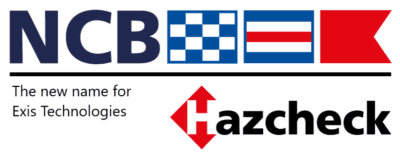Zoned out – Hazardous Cargo Bulletin, February issue
STOWAGE • RISK ZONE DATA CAN BE USED TO ENSURE THAT, IN THE EVENT OF AN INCIDENT, DANGEROUS GOODS CONTAINERS DO NOT PRESENT AN UNDUE HAZARD TO LIFE AND VESSEL
DURING THE RECENT TT Club/UK P&I Club webinar, Maersk Line’s Uffe Ernst- Frederiksen spoke a lot about the Risk Zone approach to the stowage of dangerous goods aboard containerships and mentioned that a formalised approach has been developed with the help of National Cargo Bureau (NCB) and its subsidiary Exis Technologies.
Applying its expertise in the International Maritime Dangerous Goods (IMDG) Code, Exis Technologies developed a database in which each UN entry in the Dangerous Goods List is assigned to one of five Risk Zones. The Risk Zone database is currently available free of charge under Exis’ Hazcheck Systems portal and is currently being updated to Amendment 40-20 of the IMDG Code.
Two Risk Zone categories, RZ1 and RZ2, allow stowage below deck, as these substances, should they catch fire, can be effectively extinguished using carbon dioxide. RZ3 is applied to slow-reacting cargo that can be effectively extinguished with water and should therefore be stowed above deck. RZ4 applies to flammables, oxidisers and toxic substances and RZ5 to explosives; both of these should not be stowed close to the accommodation block nor, for RZ5, close to the engineroom. These categories should be read in conjunction with the Cargo Incident Notification System’s (CINS) Safety Considerations for the risk-based stowage of dangerous goods on containerships, published in November 2019.
But the system is not a simple one-for-one comparison of UN number and RZ code; the manner of packaging can make a difference. For example, UN 1830 sulphuric acid, PG II, is assigned to RZ1 when packed in metal drums but to RZ3 when packaged in another manner. Risk Zones are also provided for dangerous goods that are not subject to the IMDG Code through the application of a special provision.
TAKING IT UP
The aim of the risk zone approach is to allow vessel operators to develop suitable and ship-specific configurations for each vessel in their fleet. James Douglas, CEO of Exis Technologies, notes that the system is being adopted by the container lines; nine of the ten largest lines already use the Hazcheck systems and, he says, Exis knows that at least 20 shipping lines have downloaded the Risk Zone database, which is provided free of charge in order to enhance ship safety. “The carriers are glad to have the data and, as far as we know, have used the data in their own vessel planning processes,” Douglas says.
The Hazckeck Risk Zone database has been promoted so far to shipping lines, ports and container terminals but there is scope for developments. It has been suggested that the data could be incorporated into the stowage and segregation provisions in the IMDG Code, which would bring it to the attention of the shipper community, who should be keen to ensure that their cargo is handled and stowed safely. It is possible that a paper will be presented to the International Maritime Organisation’s (IMO) Sub-committee on the Carriage of Cargoes and Containers (CCC) at a future session.
In the meantime, Exis Technologies says it will continue to engage with industry partners to ensure that the data is aligned with the IMDG Code and the latest best practice.
Full information about the system, along with a link to the CINS document, can be found here







